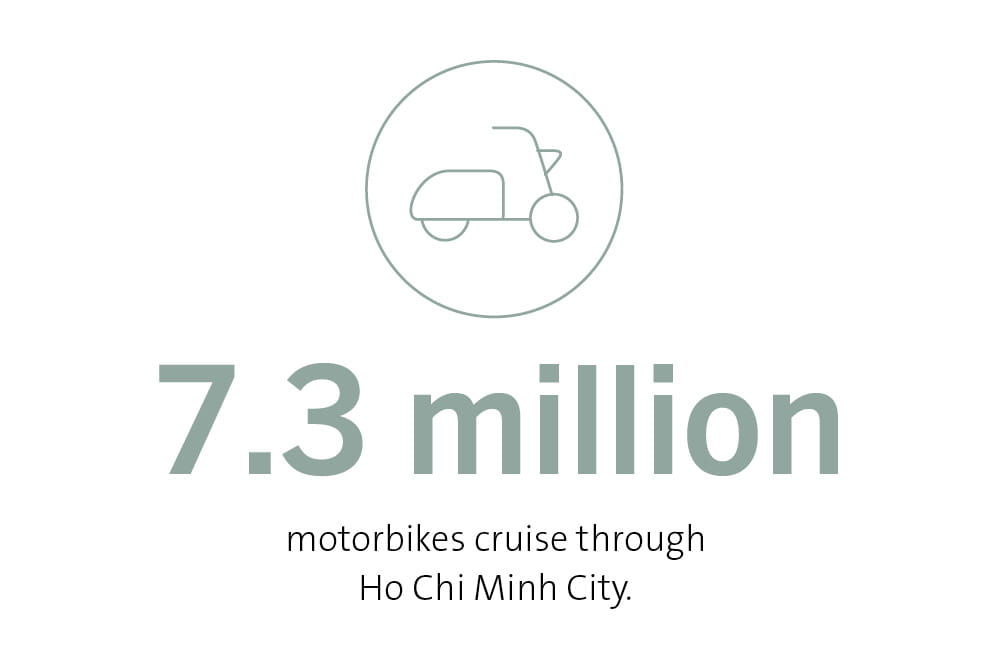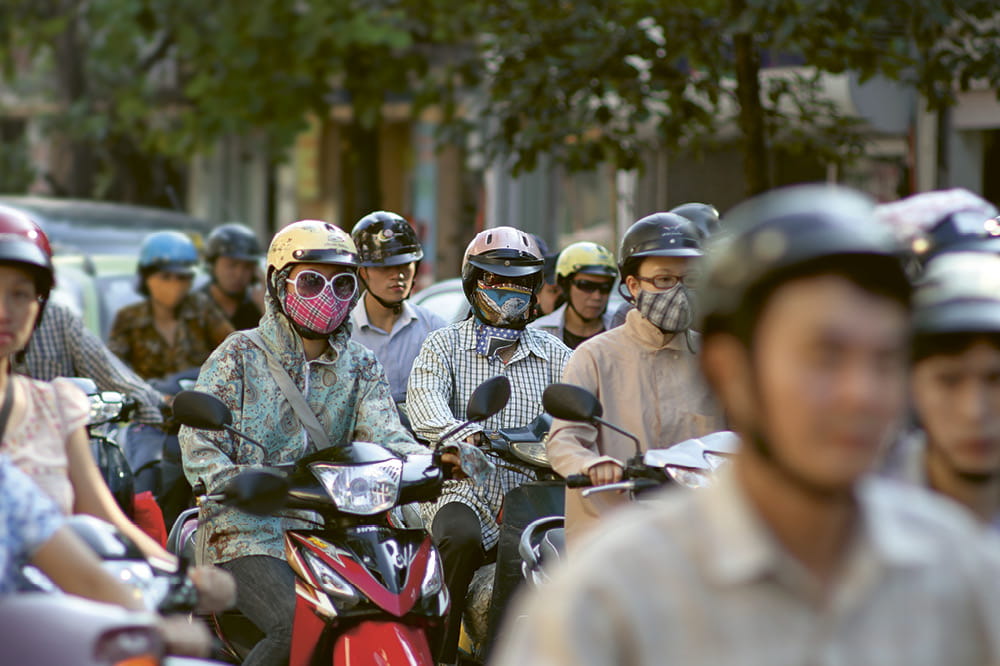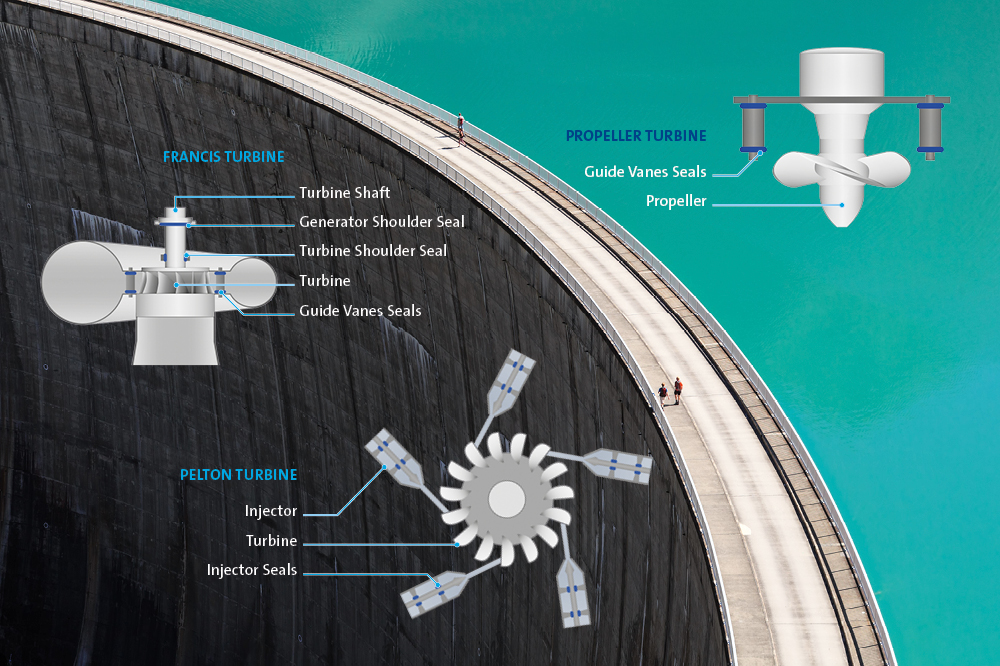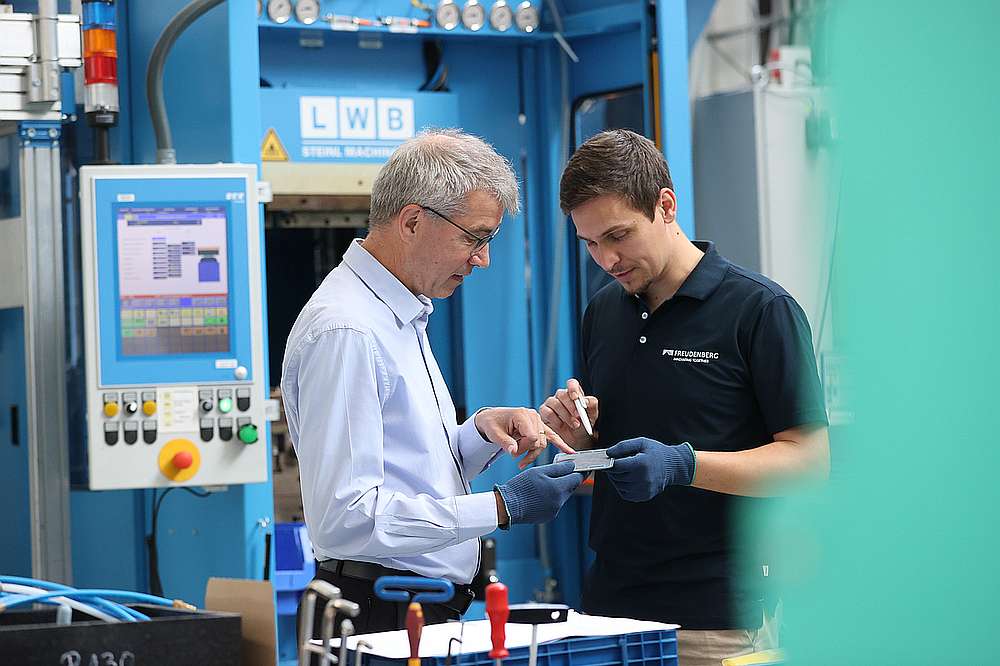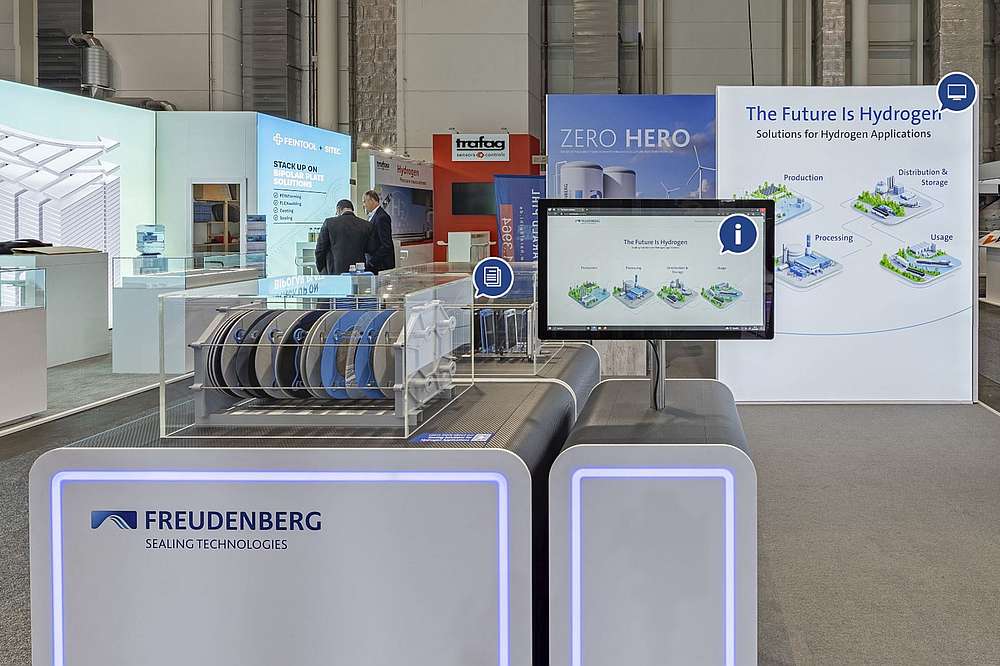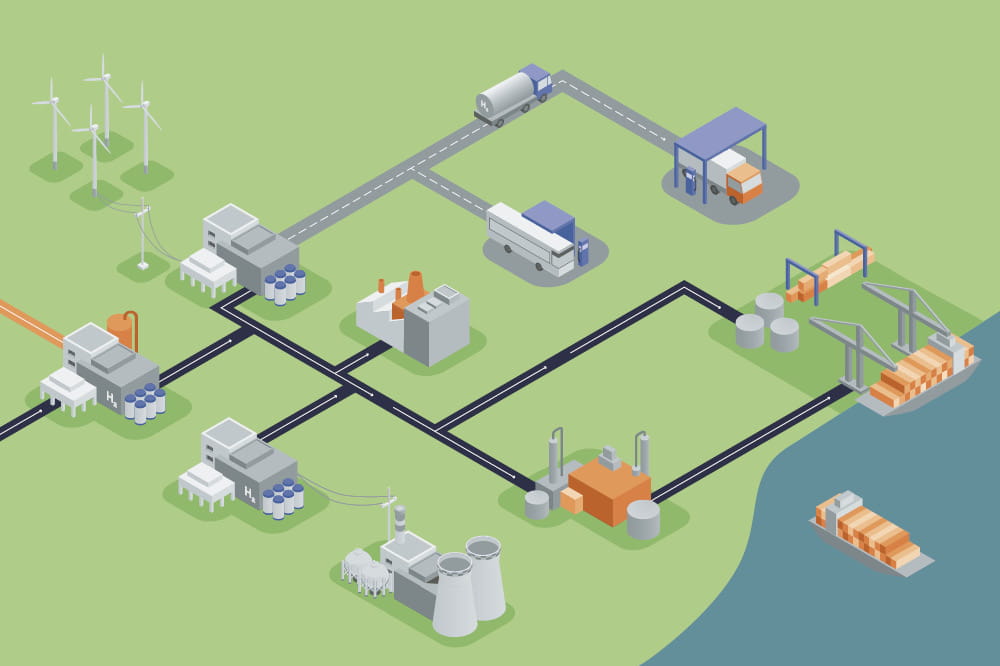Obtain news and background information about sealing technology, get in touch with innovative products – subscribe to the free e-mail newsletter.
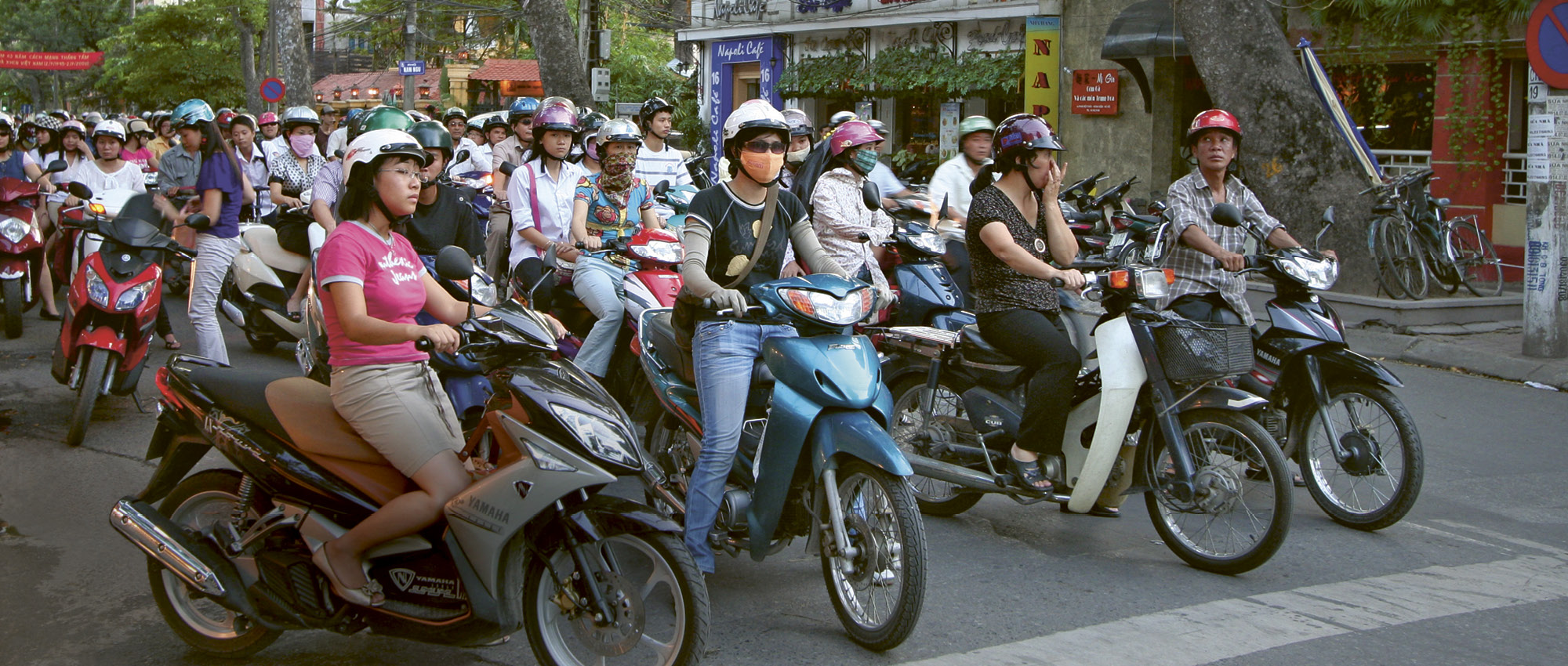
17.10.2023 | Story
Motorcycles in Urban Traffic
Traffic jams are strangling inner cities around the world, drivers are in despair, and transportation planners are looking for a way out. Can we learn something from cities whose transportation is mainly the two-wheel, motorized variety? Yes, if you think ahead into the future – and rethink the way things are done now.
It is a seething mass, alternately swarming and scattering, almost impossible to disentangle, complete with the endless blaring of horns. Analogies from the animal world spontaneously occur to anyone observing traffic in Hanoi, the capital of Vietnam. Ants and swarms of fish come to mind. The streams separate, follow curves, turn corners, and move along in utter confusion. It is an extraordinary form of swarm intelligence, with a dynamic that is completely different from what happens in most other cities in the world – where cars inch forward in stop-and-go traffic.
The usual term for these metropolises in the transportation literature is “motorcycle-dependent cities.” There are a number of them, especially in Asia: the major cities in Vietnam, and, to a lesser extent, cities such as Bangkok in Thailand and Surabaya in Indonesia. For various historical reasons, transportation is heavily dependent on motorized two-wheelers in the cities. There is also a larger share of motor scooters in Tokyo, Singapore and Hong Kong than in comparable cities in Europe or the Americas. “The textbooks on urban transportation in Western countries don’t even mention motor scooters,” wrote researcher Khuat Viet Hùng in his dissertation on the subject. He defines a city as motorcycle-dependent when the number of scooters reaches more than 350 per 1,000 inhabitants and the two-wheelers represent more than half of the traffic elements. The situation is often accompanied by a rather weak public transportation infrastructure.
Three-Quarters of All Travel With Scooters
In Ho Chi Minh City, the South Vietnamese metropolis, there are 700 motor scooters per 1,000 inhabitants – and only about 30 cars. About three-quarters of all daily trips are taken with motor scooters. The use of pedestrian walkways plays a marginal role at just 7 percent. Cars come in even lower, at 4 percent. If you are traveling to work, for shopping or just to see “friends in the neighborhood” for a moment, you use a scooter. And even though the number of cars has grown in recent years, a range of factors are working against them: side streets are rather narrow and hard to access, and parking spots are scarce commodities. Concerned about gridlock, the Vietnamese government imposes high vehicle taxes.
But the huge swarm of scooters has its pitfalls: They are loud and their gasoline two-stroke engines poison the environment just as four-wheel vehicles do. The scooters also score comparatively low on safety. There are 24 traffic deaths per 100,000 inhabitants annually in Vietnam: The figure for Germany is just four. Furthermore, the scooters’ agility leads to situations where drivers snake through the smallest gaps, creating traffic jams and chaos in their own right. The alternative is even gloomier: If you were to replace scooters with cars, the traffic in these cities would grind to a halt. Even side streets and fairly small alleys like those in Hanoi’s old city are surprisingly easy to reach with scooters, and this accessibility promotes local economic development. Restaurants and shops have to be accessible.
Rush Hour: If you want to get to your destination fast in Ho Chi Minh City, motor scooters are your best bet. They are small, fast and agile, which makes them ideal for busy streets and narrow alleys.
How Can Humanity Escape Mega Congestion?
From this perspective, the motor-scooter cities are superior to automotive metropolises in a number of ways. And they could be an answer to the questions that have concerned researchers around the world for some time: How can cities get along with fewer cars? How can cities in developing and emerging countries be prevented from falling one by one into the same trap of relying on cars for transportation, with all the accompanying woes such as traffic jams and pollution? The average resident of Los Angeles spends more than 100 hours a year in traffic jams, according to astudy by Inrix, a transportation analytics firm. The figures for cities such as São Paulo, Bogotá and London aren’t much better. By comparison, the motor scooter-dominated cities fare far better. Even during rush hour, the average speed in Hanoi is 20 kilometers per hour (12 miles per hour), statistics show. That is more than twice the figure for some American cities.
Around the world, cities have become increasingly motorized in recent years, including those that had comparatively poor populations and bad roads not so long ago – two factors that discouraged car purchases. But when growing numbers of vehicles are on the road, public transportation options run into problems. In São Paulo, the number of miles traveled by bus per capita has decreased since the 1990s. Are smaller vehicles like motor scooters a possible way towards flowing traffic?
There would ultimately be a mixture of solutions: In his dissertation back in 2006, transportation scientist Khuat Viet Hùng was already making the case for better public transportation in Vietnam’s cities. The idea is to retain motor scooters’ advantages while limiting their disadvantages. And then there are the new opportunities offered by Big Data, transportation analysis and traffic management apps, along with self-driving taxis and car-sharing. If you add a growing share of environmentally friendly electric bikes and electric smart scooters, the result is a surprisingly sustainable vision of the future. In any case, visionaries are needed to do the transportation planning of the future along these lines. The old visions – where more transportation simply takes up more space – led to six-lane roads clogged with traffic jams, like those in America, or to the inextricable tangle of two- and four-wheel vehicles found in many Asian cities. A rethinking is needed. And why not keep the motor scooter, which has been such a rarity in western cities, in mind?
Read more about "Sustainability" at Freudenberg Sealing Technologies.
More news on the subject Sustainability

Join Us!
Experience Freudenberg Sealing Technologies, its products and service offerings in text and videos, network with colleagues and stakeholders, and make valuable business contacts.
Connect on LinkedIn! open_in_new